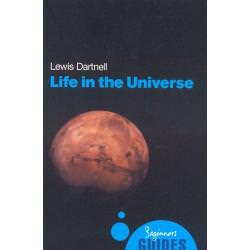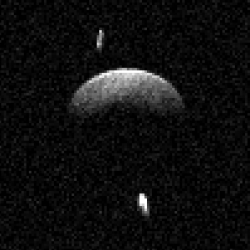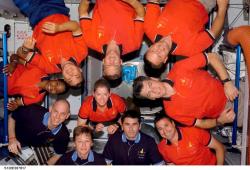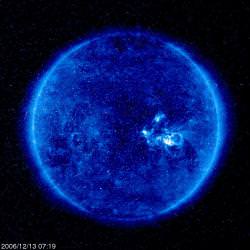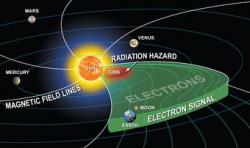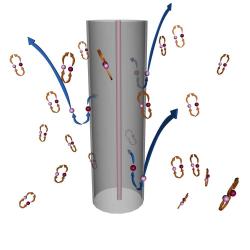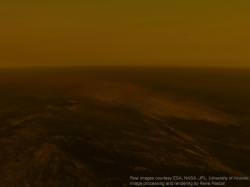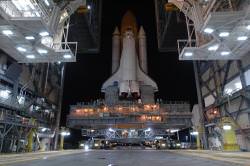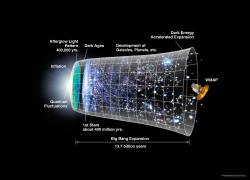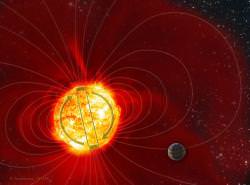Crawling and wriggling, flapping and yelping, life blooms all about us on planet Earth. We can’t avoid it nor live without it. But, what’s the scientific consideration of life? Here, Lewis Dartnell with his book Life in the Universe: A Beginner’s Guide provides a simple, viable definition. And, as the title suggests, this forms the basis for searching for life elsewhere. Especially searching way out there just beyond the tip of our telescopes.
We are alive. The plants and animals we see around us are alive. But, more than 5 kilometres beneath the Earth’s surface, bacteria live, divide and multiply. They also live in sunken Antarctic lakes, astride vents on the ocean shore and swimming in pools of nasty chemicals. So many locations on Earth have shown themselves supportive of life that we are more and more hopeful and expectant that life thrives elsewhere, beyond Earth.
Dartnell’s book takes the reader by the hand and gently and carefully leads them through the burgeoning field of astrobiology. Astrobiology is the study of (or for) life off of Earth. The book demands a simple prerequisite: an open mind. A basic knowledge of chemistry also helps. The introduction sets the stage by raising many proposed definitions of life and their short coming. Then, it expands on this by looking at some of the most basic forms of life on Earth: the eukaryotes and prokaryotes. The reader will discover that the claim to fame of these little ones rests upon their ability to use energy for their own purposes. The energy often results from simple chemical reactions, hence the benefit in knowing something of this field.
With this basis, Dartnell’s book continues on with looking at the existence of life throughout Earth. Then it makes the jump to off our world. Starting with considerations on panspermia, it progresses out to possible life on Mars, Venus, Titan and Europa. Last, there’s a summary on current attempts to identify far away stars that have orbiting planets that may have the potential for life. Having read through this, , the reader will more greatly appreciate both the efforts in place to support astrobiology and the results that regularly come in.
Though Dartnell’s book is a beginner’s guide, it places some expectations on the reader. Sometimes it delves deep, as with the description of eukaryotic cells and their chromosomes, mitochondria and vesicles. Then there’s fornamide with it three phases limited by temperature and pressure similarly to water. And, almost half the total solar energy absorbed by Venus is at the ultraviolet wavelength. Particulars like these contribute to the discussions in the book but don’t limit the understanding of the central theme. Also, as if to lighten the air, Dartnell plays with the metaphors. For instance, the surface of Titan is described as a crème brulee of a hard crust covering a ground sodden with liquid methane. Such analogies and other light moments keep the reader’s interest and perhaps a slight smile on the face.
The challenging thing about astrobiology, and this book, is the separation between fact and hypothesis. We strongly believe that the Earth is over 4 billion years old. But, there aren’t any fossils of the same age, so we can only guess the true age and when our oldest ancestors appeared. In another matter, we can measure spectra of light that travels through the Earth’s atmosphere and bounces off the Moon. Then, we can measure spectra from planets circling other stars and look for similarities and then make deductions. This reliance upon hypothesis and deduction makes the incipient field of astrobiology both exciting and exasperating. The same goes for this book.
Yet, it is the book’s subject that causes the exasperation, not the book nor the writing. Dartnell has a busy writing style, nearly all of it specifically directed to the understanding of the physical meaning of life. This alone makes this book a strong calling card, as who doesn’t want to know a bit more about what makes themselves tick? Further, given that some of the strongest mandate for space exploration has been and continues to be to find life, reading this book will put the reader into the frame of mind of those doing the work. For this alone, this book is recommended to all living beings.
A human’s life span, though personally very important, means little over the duration of the universe. Life may be elsewhere or perhaps everywhere. Lewis Dartnell’s book Life in the Universe: A Beginner’s Guide tells us what we can expect life to be like and where we might find it. As we keep finding life in the most unexpected places on Earth, there’s every reason to expect finding it places well off of Earth as well.
Read more reviews or purchase a copy online from Amazon.com.

